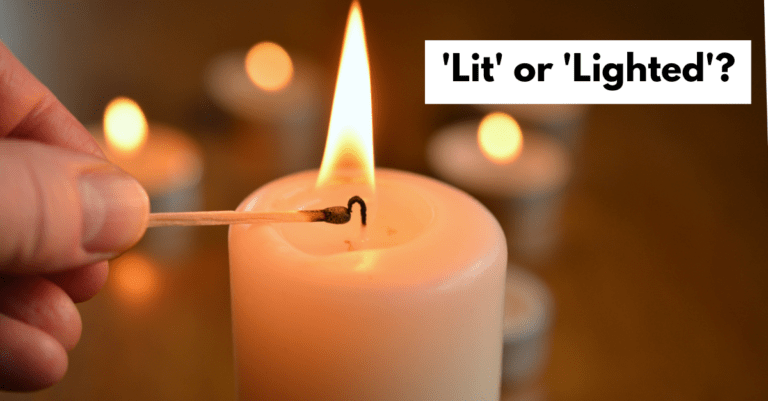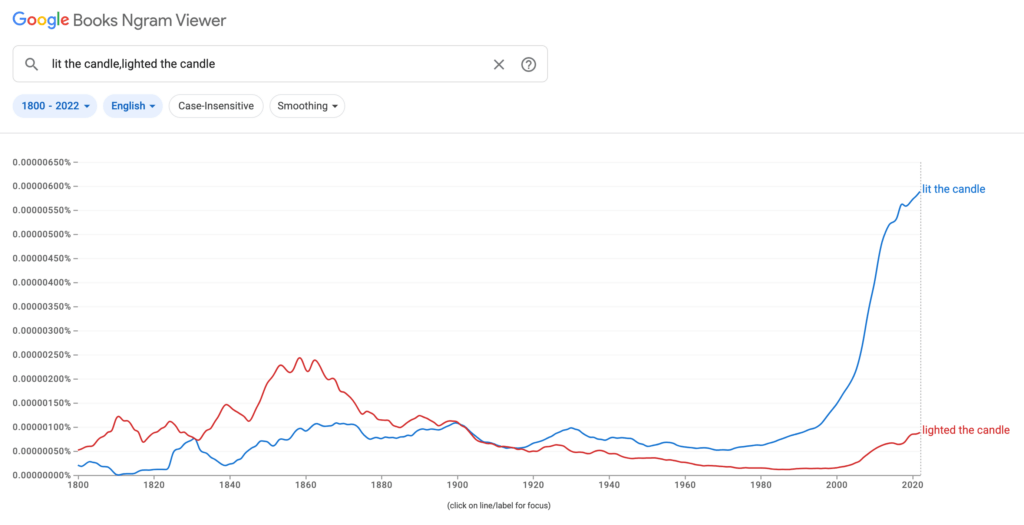Have you ever wondered why we have two past tense forms of the verb “to light”? Should you say, “Squiggly lit the candles,” or “Squiggly lighted the candles”? Maybe you’ve even wondered whether one is wrong. “Lighted” sounds kind of weird in that sentence, right? “Squiggly lighted the candles?”
‘Light’ has two past tense forms: ‘lit’ and ‘lighted’
Well, both words are correct. “Light” is one of those rare English words that has two acceptable past-tense forms.
“Lighted” is what we call a regular verb because you make it past tense by adding “-ed” to the end. “Lit” is what we call an irregular verb because you make it past tense by changing the actual spelling; you don’t just add “-ed” to the end.
So “walked,” “sipped,” and “lighted” are all regular verbs. And “ran,” “drank,” and “lit” are all irregular verbs.
English verbs tend to become regular over time, but ‘lit’ didn’t
In the past, English had a lot more irregular verbs, but over time, many changed form and became regular, making English simpler. But for reasons nobody seems to be able to explain, “light” took the opposite route. Long ago, people used the irregular verb, saying they lit candles, and for a time, the verb acted like many others and moved toward becoming a regular verb—in other words, people started saying they lighted candles instead of saying they lit candles. But — and this is the thing that makes this verb unusual — around the year 1900, people switched back to using “lit” as the past tense, and that’s still the more common form today. As a verb, “lit” is currently much more common than “lighted” in both British and American English.
‘Lit’ and ‘lighted’ as adjectives
Of course, “lit” and “lighted” can also be used as adjectives. For example, you can say you enter a lit hallway or a lighted hallway, but the story here is a little different.
According to a Google Ngram search, which looks at how often words appear in published books, “lighted” used to be far more common as an adjective. Think of the short story by Ernest Hemingway from 1933 titled “A clean, well-lighted place.”
But “lit” became more popular in Britain in the 1960 and later, it also became more popular in the United States — around the year 2000. And in both cases, once “lit” took off, it really took off. As an adjective, it’s used more than three times as often as “lighted” in books from both regions.
I do wonder how much the fact that “lit” became a slang term has influenced the charts I’m looking at — as in people saying, “That party was lit!” — but it seems like the spike I’m seeing in Google Ngrams started at least 10 or 15 years before the slang use became widespread.
So if you’re wondering how you should use these words, the bottom line is that both “lit” and “lighted” currently exist as fully acceptable past-tense forms of the verb “to light” and as adjectives. You can use either one, but people use “lit” much more often, so it’s more likely to sound natural to your readers.





